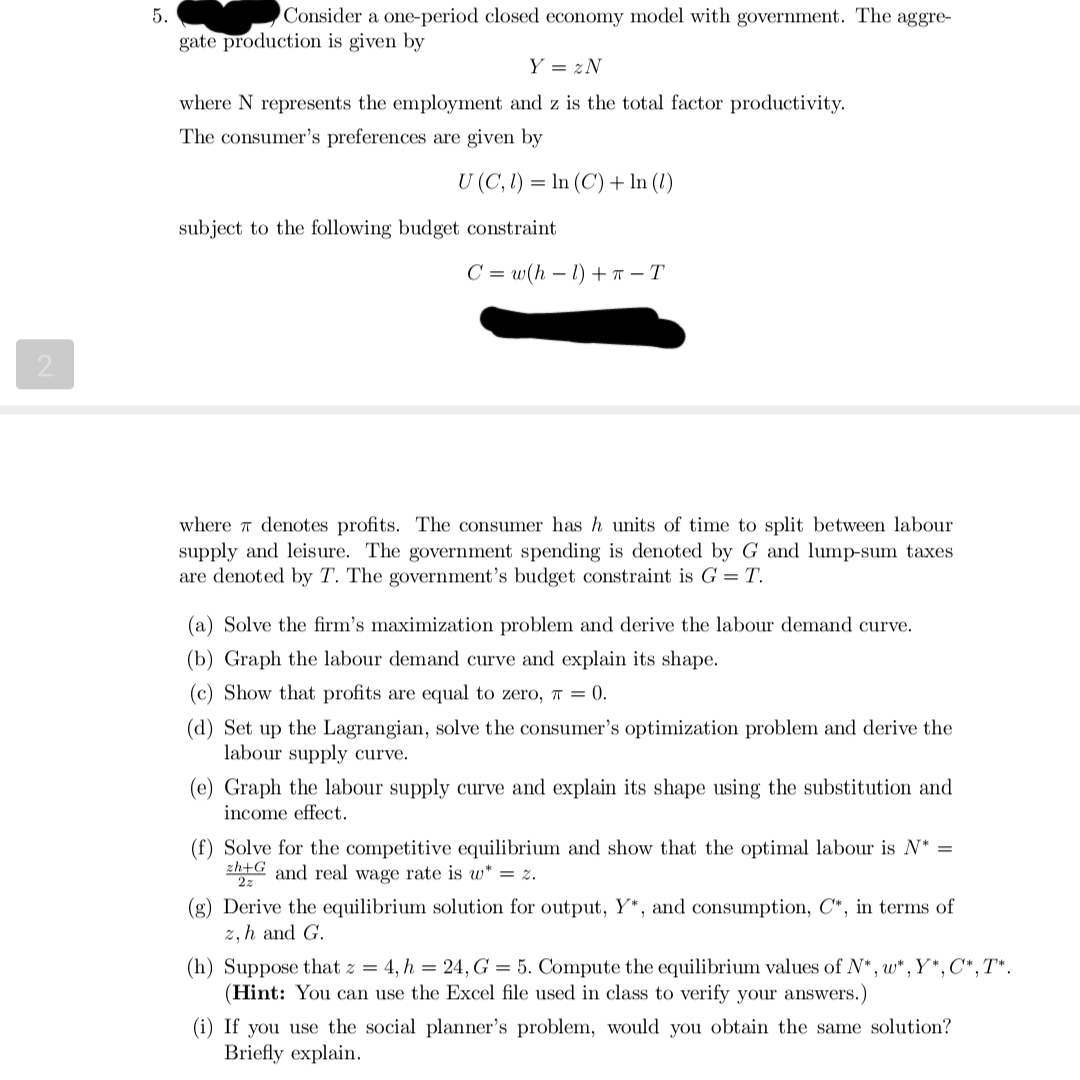(a) Solve the firm's maximization problem and derive the labour demand curve. (b) Graph the labour demand curve and explain its shape. (c) Show that profits are equal to zero, T = 0. (d) Set up the Lagrangian, solve the consumer's optimization problem and derive the labour supply curve. (e) Graph the labour supply curve and explain its shape using the substitution and income effect. (f) Solve for the competitive equilibrium and show that the optimal labour is N* = 2h+G and real wage rate is w* = 2. 2z
(a) Solve the firm's maximization problem and derive the labour demand curve. (b) Graph the labour demand curve and explain its shape. (c) Show that profits are equal to zero, T = 0. (d) Set up the Lagrangian, solve the consumer's optimization problem and derive the labour supply curve. (e) Graph the labour supply curve and explain its shape using the substitution and income effect. (f) Solve for the competitive equilibrium and show that the optimal labour is N* = 2h+G and real wage rate is w* = 2. 2z
Chapter16: Labor Markets
Section: Chapter Questions
Problem 16.12P
Related questions
Question

Transcribed Image Text:2
5.
Consider a one-period closed economy model with government. The aggre-
gate production is given by
Y = 2N
where N represents the employment and z is the total factor productivity.
The consumer's preferences are given by
U (C, 1) = ln (C) + In (1)
subject to the following budget constraint
where denotes profits. The consumer has h units of time to split between labour
supply and leisure. The government spending is denoted by G and lump-sum taxes
are denoted by T. The government's budget constraint is G = T.
C=w(h-1) +- T
(a) Solve the firm's maximization problem and derive the labour demand curve.
(b) Graph the labour demand curve and explain its shape.
(c) Show that profits are equal to zero, π = 0.
(d) Set up the Lagrangian, solve the consumer's optimization problem and derive the
labour supply curve.
(e) Graph the labour supply curve and explain its shape using the substitution and
income effect.
(f) Solve for the competitive equilibrium and show that the optimal labour is N* =
and real wage rate is w* = z.
zh
22
(g) Derive the equilibrium solution for output, Y*, and consumption, C*, in terms of
z, h and G.
(h) Suppose that z = 4, h = 24, G = 5. Compute the equilibrium values of N*, w*, Y*, C*, T*.
(Hint: You can use the Excel file used in class to verify your answers.)
(i) If you use the social planner's problem, would you obtain the same solution?
Briefly explain.
Expert Solution
This question has been solved!
Explore an expertly crafted, step-by-step solution for a thorough understanding of key concepts.
This is a popular solution!
Trending now
This is a popular solution!
Step by step
Solved in 4 steps with 1 images

Knowledge Booster
Learn more about
Need a deep-dive on the concept behind this application? Look no further. Learn more about this topic, economics and related others by exploring similar questions and additional content below.Recommended textbooks for you

